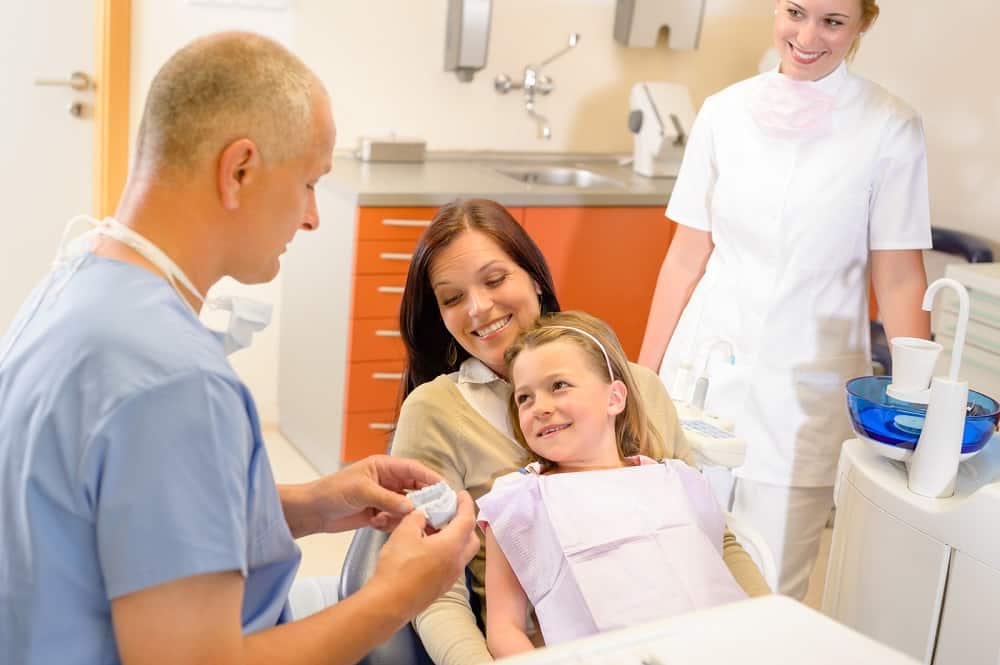The Canadian Association of Orthodontists recommends that parents take their child to see an orthodontist for the first time at the age of seven. Don’t wait for any problems to emerge or for your pediatric dentist to become concerned. Consulting with an orthodontist in Prince Albert when your child is seven will let the orthodontist determine whether your child might need orthodontic treatment and answer any questions about what treatment might involve.
“Regular” orthodontic treatment for kids (sometimes called “Phase II” treatment) usually begins when a child is around 11 years old. Some children benefit from “early” orthodontic treatment. Early orthodontic treatment is sometimes called “Phase I” treatment.
Should your child get “early” diagnostic treatment?
The goal of early orthodontic treatment is to ensure that your child’s permanent teeth grow in straight to reduce the risk that your child will need tooth extractions later because permanent teeth are overlapping or becoming impacted or crooked. In addition to trying to make sure that your child’s later permanent teeth come in straight, another goal of early orthodontic treatment is to ensure there’s enough room in your child’s jaws to accommodate all of her teeth. Every dentist near you is concerned with these issues, but orthodontists are experts in ensuring a child’s teeth and jaw develop appropriately as they grow.
There are several signs that your child might benefit from receiving early orthodontic treatment. Those signs include:
-
If your child begins losing teeth early (tooth loss typically starts around age five) or late (typically all of a child’s permanent teeth are in by approximately age 13)
-
If your child has problems chewing or biting
-
If your child breathes through her mouth often
-
If your child sucks her thumb beyond the age of five
-
If your child has any speech impediments or difficulty learning to speak
-
If your child has protruding teeth
-
If your child’s upper and lower teeth do not meet (normally or at all) when her mouth is closed
-
If your child’s jaws seem to shift to one side or the other when she opens or closes her mouth
-
If, at age seven or eight, the teeth in the front of your child’s mouth seem overly crowded
If your orthodontist determines that your child would benefit from early orthodontics, treatment can be much easier and less invasive than it might be if you waited until your child was older. Providing orthodontic treatment to older children and adults often requires that teeth are extracted and other types of oral surgery. Beginning orthodontic treatment early, on the other hand, may eliminate the need for extractions and surgery later.
We understand that the prospect of your child undergoing orthodontic treatment at the age of seven, eight, nine or even 10 feels stressful. Pediatric dentists and orthodontists are specifically trained and committed to providing treatment in a way that takes into account the needs of each child and each family while providing care safely, effectively and as comfortably as possible.
What are the benefits of early orthodontic treatment for kids?
Early orthodontic treatment is sometimes referred to as “preventative” or “interceptive” care, meaning that reviewing and treating a child’s orthodontic needs can prevent future orthodontic issues and intercept emerging orthodontic issues before they become complex. Here are five significant benefits of early orthodontic treatment:
-
There will be room for their permanent teeth without overcrowding
-
Her face will remain symmetrical as she grows because her jaw is growing properly
-
There will be a reduced risk of the need for future tooth extractions or oral surgery
-
The risk that she will need braces may be reduced or even eliminated
If you have a six or seven year old child, ask your pediatric dentist to recommend an orthodontist near you to meet your child and review the condition and growth of her teeth and jaw. If your child is older than that but has not met an orthodontist yet, don’t delay in making an appointment with an orthodontist at a dental clinic in Prince Albert.
